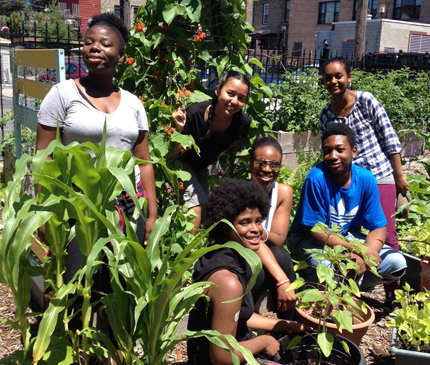Soil Science Society of America
5585 Guilford Road • Madison, WI 53711-5801 • 608-273-8080 • Fax 608-273-2021
www.soils.org
Twitter | Facebook
NEWS RELEASE
Contact: Hanna Jeske, Associate Director of Marketing and Brand Strategy, 608-268-3972, hjeske@sciencesocieties.org
Tips for community gardens
Feb. 12, 2018 - With the garden season fast approaching, the Soil Science Society of America (SSSA) has updated their Community Gardens website. There, gardeners can find out how to design and build community gardens.
 “Community gardens are where the residents of a community are empowered to design, build, and maintain spaces in the community,” says Mary Stromberger, a professor at Colorado State University, and leader of the SSSA team that updated the Community Garden website.
“Community gardens are where the residents of a community are empowered to design, build, and maintain spaces in the community,” says Mary Stromberger, a professor at Colorado State University, and leader of the SSSA team that updated the Community Garden website.
The site has tips on designing community gardens. Some community gardens are more casual, creating a chance to meet neighbors and participate in a common hobby. Other gardens might be focused on producing enough vegetables for themselves and to contribute to local food pantries. ”Discussing vision in advance can make the garden’s governance flow more smoothly,” says Andrea Basche, content provider and assistant professor at the University of Nebraska-Lincoln.
The below list outlines several different purposes for communal garden structures:
- Herb garden
- Flower garden
- Orchard
- Native plant garden
- Gathering place
- Children’s garden
- Demonstration garden
- Community-run volunteer (take produce as you work model)
Finding a suitable site for a community garden can also be a challenge. “Top things to consider are visibility, access, environmental conditions, and soil quality,” says Sarick Matzen, content provider and PhD student at the University of California, Berkeley. Some of the most successful gardens are situated in a place where the community naturally gathers. Access to the garden by participants’ vehicles–or even delivery vehicles (think an order of new topsoil) should be considered in choosing a site.
Of course, vegetables need adequate sunlight, so the amount of shade on the site should be considered. Alternatively, a bit of shade for workers can be a benefit.
Urban soil is often compacted and can be contaminated if near an industrial site. Amendment or even raised beds may be necessary. In fact, raised beds offer many benefits, including increased accessibility for gardeners who are older or have disabilities. The site contains a section on raised bed construction as well.
To view the entire SSSA Community Garden resource, visit https://soils.org/discover-soils/soils-in-the-city/community-gardens.